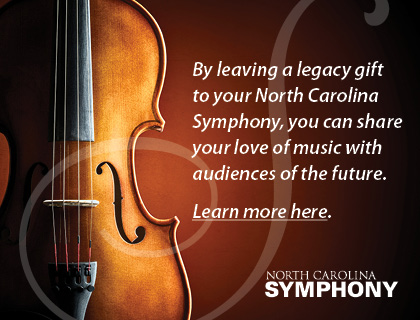Symphony No. 4 in G Major
Gustav Mahler (1860-1911)
THE STORY
Gustav Mahler’s Symphony No. 4 clocks in at more than double the length of Haydn’s Symphony No. 90—yet it is his smallest in size and scope. It is also his sunniest, with lighter orchestration that leaves out his signature low brass (there are no tubas or trombones).
The Symphony No. 4 was the first symphony for which Mahler did not provide accompanying programmatic descriptions. He also refused to allow the symphony to be programmed with other vocal works, wanting the soprano in the fourth movement to come as a complete surprise. Indeed, it was: Never before had a single solo voice been combined with orchestral forces in a symphony.
The entire symphony is built upon the song that appears in the final movement, with its theme anticipated in the previous three movements. This lends an undeniable sense of arrival when the song finally makes its full appearance—appropriate, considering it depicts heaven through a child’s imagination. The text is from “Das himmlische Leben,” or “The Heavenly Life,” a piece (originally with a different title) in a collection of German folk poetry called Des Knaben Wunderhorn (“The Boy’s Magic Horn”).
After great anticipation for the new symphony (several ensembles were in a tug-of-war to premiere it and the honor went to the Kaim Orchestra in 1901), it was booed by the audience and panned by the press. Many felt that its smaller scale didn’t live up to what a Mahler symphony was “supposed” to be, or found its sensuality to be “vulgar.”
Mahler brought the symphony on tour, but the response didn’t improve. Apparently undeterred, he conducted it 11 times in total, his final performance taking place at Carnegie Hall in 1911. (He made several revisions along the way, based on his experience conducting the work—revised versions were published in 1905, 1910, and 1911.) Now, it is considered to be one of his most accessible compositions, masterfully portraying childhood innocence, humor, and spirituality.
LISTEN FOR
• The introduction played by flutes and sleigh bells, and a sense of gemutlichkeit throughout—an untranslatable German word that encompasses both “coziness” and “belonging”
• In the second movement, the eerie atmosphere that is created by the solo violin, which is tuned unconventionally (a whole-tone higher than usual)
• After the double theme and variations, a loud and brilliant E-major chord—a new and surprising tonality—that ushers in the coda (concluding section) of the third movement and seems to symbolize the gates of heavens opening up
• In the finale, orchestral refrains bring back the sleigh bell motive from the opening of the symphony in short bursts; the symphony concludes with a sense of serenity
INSTRUMENTATION
Solo soprano, four flutes (two doubling piccolo), three oboes (one doubling English horn), three clarinets (one doubling E-flat clarinet, one doubling bass clarinet), three bassoons (one doubling contrabassoon), four horns, three trumpets, timpani, percussion, harp, strings

